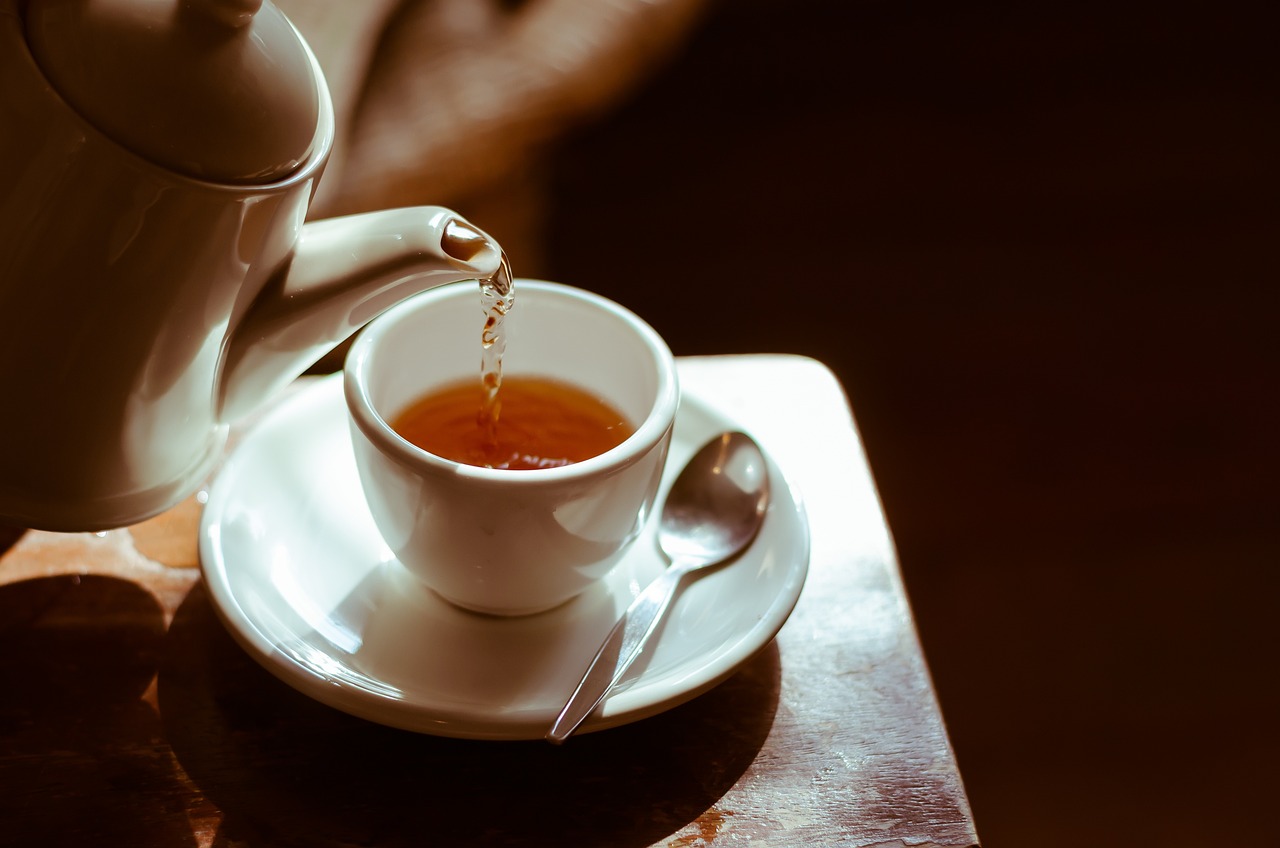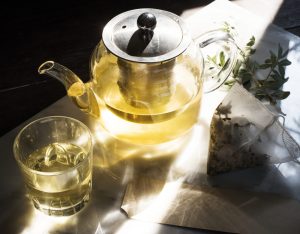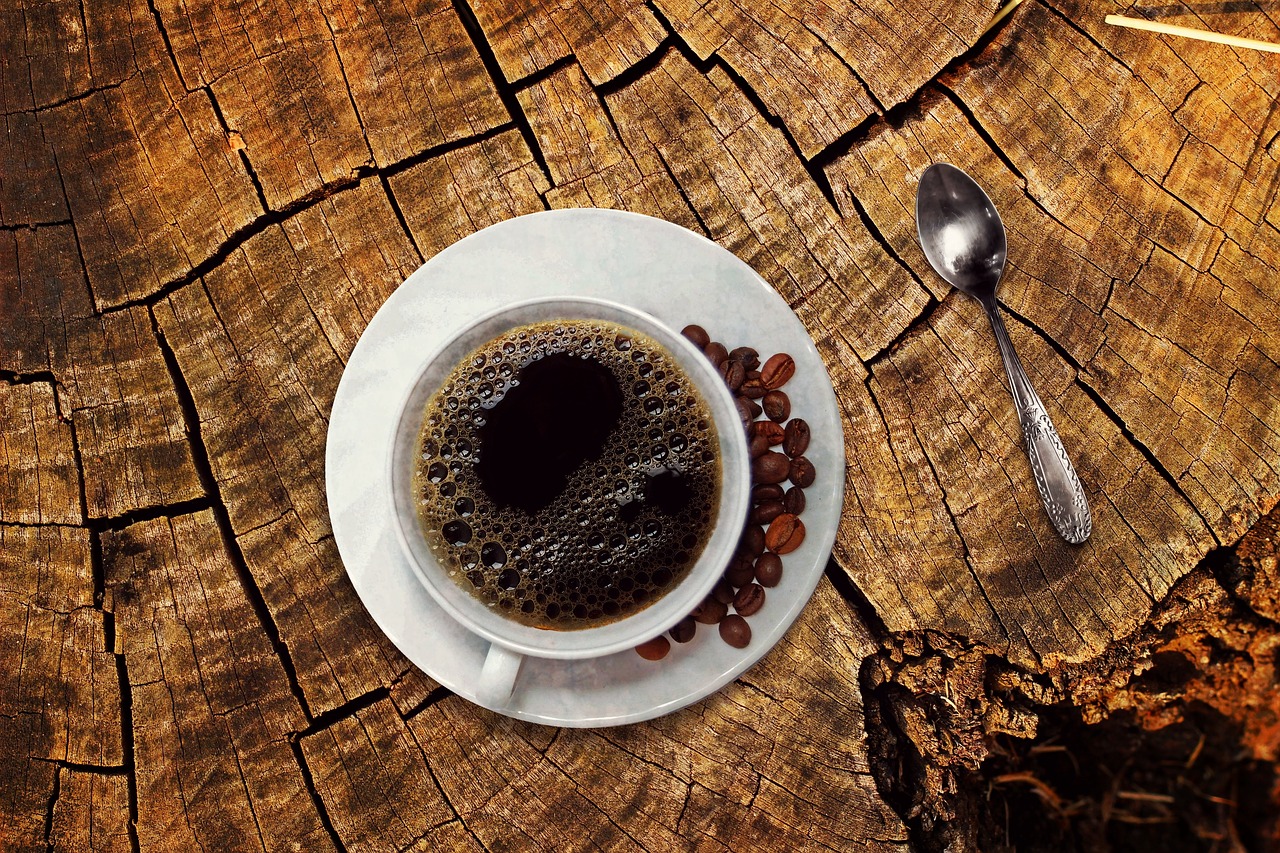Starting the day with a warm cup of tea is something many of us enjoy. But did you know there are different kinds of tea? Tea, an ancient and beloved beverage, offers a delightful journey through various flavors and traditions. From the fresh taste of green tea to the robust profile of black tea, and the calming infusion of chamomile to the unique smoky notes of tandoori chai, each type brings its own story and benefits. Originating from the Camellia sinensis plant or crafted from diverse herbs and spices, these different types of tea provide warmth, comfort, and a connection to cultures worldwide. Join us as we explore the myriad of tea types, uncovering the rich history and distinctive qualities that make each variety a cherished part of our daily lives.
Different Types of Tea
Discover different kinds of tea, each with its own special qualities. Join us as we explore these delightful tea varieties, one at a time.
-
Green Tea
Green tea is a popular drink with a fresh taste and green colour. People all over the world enjoy it for its health benefits.
-
How Green Tea is Made:
Green tea is made by steaming or pan-frying freshly picked tea leaves, preserving their natural colour and nutrients.
-
Flavour of Green Tea:
Green tea offers a delicate, grassy flavour with subtle hints of sweetness, making it a soothing and enjoyable drink.
-
Origin of Green Tea:
Green tea traces its roots back to ancient China, where it has been cultivated for centuries before spreading to other parts of Asia and the world.
Also Read: 10 Health Benefits of Green Tea
-
-
Chamomile Tea
Chamomile tea, known for its calming properties, is a soothing herbal infusion enjoyed for its gentle flavour and relaxation benefits.
-
How Chamomile Tea is Made:
Chamomile tea is made by steeping dried chamomile flowers in hot water, allowing its natural flavours and aromas to infuse.
-
Flavour of Chamomile Tea:
Chamomile tea offers a mild, floral taste with subtle hints of sweetness, providing a comforting and tranquil experience with every sip.
-
Origin of Chamomile Tea:
Chamomile tea has ancient origins, with records of its use dating back to ancient Egypt, Greece, and Rome. Today, it is cultivated in various regions worldwide for its therapeutic properties and delightful flavour.
-
-
Black Tea
Black tea is a classic beverage appreciated for its bold flavour and invigorating qualities, making it a popular choice among tea enthusiasts worldwide.
-
How Black Tea is Made:
Black tea undergoes a process of withering, rolling, oxidation, and drying, resulting in its distinct dark colour and robust flavour profile.
-
Flavour of Black Tea:
Black tea boasts a rich, full-bodied taste with notes ranging from malty and earthy to sweet and fruity, offering a satisfying drinking experience for tea lovers.
-
Origin of Black Tea:
Black tea originated in China and was later introduced to other parts of the world, including India and Sri Lanka. Today, it is produced in various regions, each contributing unique characteristics to its flavour and aroma.
Also Read: The Magic of Black Tea
-
-
Herbal Tea
Herbal tea, also known as herbal infusion, is a caffeine-free beverage crafted from dried flowers, herbs, spices, and fruits, offering a refreshing and soothing experience.
-
How Herbal Tea is Made:
Herbal tea is made by steeping various dried herbs, flowers, and fruits in hot water, allowing their natural Flavors and aromas to infuse into the liquid.
-
Flavour of Herbal Tea:
Herbal tea offers a diverse range of Flavors, from floral and fruity to spicy and earthy, providing a delightful and comforting drinking experience for tea lovers.
-
Origin of Herbal Tea:
Herbal tea has been enjoyed for centuries across different cultures, with origins tracing back to ancient Egypt, China, and Greece. Today, herbal teas are crafted from a variety of plants and herbs sourced from around the world.
Also Read: 5 Herbal Tea Recipes to Boost Your Immunity
-
-
Matcha Tea
Matcha tea is a vibrant and flavourful Japanese green tea powder known for its unique preparation method and rich, grassy taste, offering a refreshing and energizing beverage.
-
How Matcha Tea is Made:
Matcha tea is made by finely grinding shade-grown green tea leaves into a powder, which is then whisked with hot water, creating a frothy and velvety smooth infusion.
-
Flavour of Matcha Tea:
Matcha tea delights the senses with its bold and vegetal flavour profile, characterized by a smooth texture, slightly sweet undertones, and a hint of bitterness, providing a satisfying and invigorating drinking experience.
-
Origin of Matcha Tea:
Matcha tea has its origins in Japan, where it has been cultivated and enjoyed for centuries as part of traditional Japanese tea ceremonies. Today, it continues to be prized for its unique flavour and cultural significance.
-
-
White Tea
White tea is a delicate and subtle tea variety made from young tea leaves and buds, prized for its mild flavour and delicate aroma, offering a gentle and refreshing drinking experience.
-
How White Tea is Made:
White tea is made by carefully plucking young tea leaves and buds, then gently drying them under controlled conditions, preserving their natural freshness and flavour.
-
Flavour of White Tea:
White tea offers a light and subtle flavour profile with delicate floral and sweet undertones, creating a refreshing and soothing drinking experience that’s perfect for relaxation.
-
Origin of White Tea:
White tea originated in China’s Fujian province, where it has been produced for centuries using traditional methods. Today, it is also cultivated in other regions, including India and Sri Lanka, but it remains most closely associated with its Chinese origins.
-
-
Masala Chai
Masala chai is a flavourful and aromatic Indian tea blend, infused with a rich combination of spices and herbs, offering a warm and comforting beverage enjoyed throughout India and beyond.
-
How Masala Chai is Made:
Masala chai is made by brewing black tea with a mixture of spices such as cinnamon, cardamom, ginger, cloves, and black peppercorns, simmered with milk and sweetened to taste.
-
Flavour of Masala Chai:
Masala chai delights the palate with its bold and spicy flavour profile, balanced by the creamy texture of milk and the warmth of aromatic spices, creating a soothing and invigorating drinking experience.
-
Origin of Masala Chai:
Masala chai originated in India, where it has been a beloved beverage for centuries, traditionally enjoyed as a rejuvenating drink that provides warmth and comfort, especially during cool weather.
-
-
Darjeeling Tea
Darjeeling tea is a prized Indian tea renowned for its unique flavour and exquisite aroma, often referred to as the “Champagne of Teas” for its unparalleled quality and elegance.
-
How Darjeeling Tea is Made:
Darjeeling tea is made from the Camellia sinensis plant, grown in the Darjeeling region of India, and processed using traditional methods such as hand-plucking and withering, resulting in its distinctive flavour and character.
-
Flavour of Darjeeling Tea:
Darjeeling tea offers a delicate and floral flavour with muscatel notes, reflecting the terroir of the Himalayan mountains where it is cultivated, providing a refined and sophisticated drinking experience.
-
Origin of Darjeeling Tea:
Darjeeling tea originates from the Darjeeling district in West Bengal, India, where it has been produced since the mid-19th century, gaining global recognition for its exceptional quality and distinctive taste.
-
-
Irani Chai
Irani chai is a rich and aromatic tea blend originating from Iran and popularized in India, known for its strong flavour and cultural significance in Iranian and Indian communities.
-
How Irani Chai is Made:
Irani chai is typically made by brewing strong black tea leaves with spices like cardamom, cloves, and cinnamon, simmered with milk and sugar for a creamy and indulgent beverage.
-
Flavour of Irani Chai:
Irani chai boasts a bold and robust flavour profile, with a perfect balance of tea, spices, and sweetness from the milk, creating a satisfying and comforting drinking experience.
-
Origin of Irani Chai:
Irani chai originates from Iran, where it has been a traditional beverage enjoyed for centuries. It gained popularity in India through Iranian immigrants, particularly in cities like Hyderabad and Mumbai, where it became an integral part of the local culture and cuisine.
-
-
Oolong Tea/ Wulong Tea
Oolong tea is a semi-oxidized tea with a unique flavour profile, falling between green and black tea, celebrated for its complex taste and numerous health benefits.
-
How Oolong Tea is Made:
Oolong tea is made by withering the tea leaves under the sun, then oxidizing them before drying, resulting in a partially fermented tea with distinctive Flavors.
-
Flavour of Oolong Tea:
Oolong tea offers a wide range of Flavors, from floral and fruity to woody and roasted, with a smooth and lingering finish, providing a delightful and invigorating drinking experience.
-
Origin of Oolong Tea:
Oolong tea originated in China’s Fujian province, where it has been produced for centuries using traditional methods. It is also cultivated in Taiwan and other regions, each contributing unique characteristics to its flavour and aroma.
-
-
Lemongrass Tea
Lemongrass tea is a refreshing herbal infusion made from the leaves of the lemongrass plant, prized for its citrusy flavour and numerous health benefits.
-
How Lemongrass Tea is Made:
Lemongrass tea is made by steeping fresh or dried lemongrass leaves in hot water, releasing its aromatic oils and citrusy flavour.
-
Flavour of Lemongrass Tea:
Lemongrass tea offers a bright and zesty citrus flavour with a hint of sweetness, providing a refreshing and invigorating drinking experience.
-
Origin of Lemongrass Tea:
Lemongrass tea has its origins in Southeast Asia, where lemongrass grows abundantly. It has been enjoyed for centuries in various cultures for its refreshing taste and medicinal properties.
-
-
Tandoori Chai
Tandoori chai is a unique and flavourful tea preparation, where tea is brewed in a clay pot, imparting a smoky flavour, popular in India for its distinct taste and cultural significance.
-
How Tandoori Chai is Made:
Tandoori chai is made by brewing tea leaves with spices and milk, then heating the mixture in a clay pot (tandoor) until it develops a smoky flavour and aroma.
-
Flavour of Tandoori Chai:
Tandoori chai offers a rich and smoky flavour, complemented by the creamy texture of milk and the warmth of aromatic spices, providing a unique and indulgent drinking experience.
-
Origin of Tandoori Chai:
Tandoori chai originated in India, particularly in cities like Pune and Mumbai, where tea vendors began experimenting with brewing tea in clay pots traditionally used for baking bread (naan) in tandoor ovens.
-
-
Chai Tea
Chai tea is a spiced tea blend originating from India, cherished for its rich flavour and aromatic spices, offering a comforting and invigorating beverage enjoyed worldwide.
-
How Chai Tea is Made:
Chai tea is made by brewing black tea with a combination of spices such as cardamom, cinnamon, cloves, and ginger, then simmering with milk and sweetener for a creamy and flavourful drink.
-
Flavour of Chai Tea:
Chai tea boasts a bold and spicy flavour profile, with warming notes of cinnamon, cardamom, and ginger, complemented by the creamy texture of milk and the sweetness of sugar or honey.
-
Origin of Chai Tea:
Chai tea originated in India, where it has been a staple beverage for centuries, traditionally prepared by steeping black tea leaves with spices and milk. It has since gained popularity worldwide, becoming a beloved drink enjoyed in various cultures.
-
-
Peach Tea
Peach tea is a refreshing beverage infused with the sweet and juicy flavour of ripe peaches, offering a delightful and fruity twist to traditional tea.
-
How Peach Tea is Made:
Peach tea is made by steeping black, green, or herbal tea leaves with peach flavouring or fresh peach slices, creating a fragrant and flavourful infusion.
-
Flavour of Peach Tea:
Peach tea offers a luscious and fruity taste with hints of sweetness, reminiscent of biting into a ripe peach on a warm summer day, providing a refreshing and thirst-quenching drinking experience.
-
Origin of Peach Tea:
Peach tea has its roots in the southern United States, where it became popular in the late 19th century, inspired by the abundance of peaches in the region. Today, it is enjoyed worldwide for its delicious flavour and versatility.
Also Read: What are the health benefits of Peach Tea.
-
-
Mate Tea
Mate tea, originating from South America, is a traditional herbal infusion known for its earthy flavour and energizing properties, enjoyed as a social and cultural beverage.
-
How Mate Tea is Made:
Mate tea is made by steeping dried leaves of the yerba mate plant in hot water, resulting in robust and flavourful brew rich in antioxidants and nutrients.
-
Flavour of Mate Tea:
Mate tea offers a bold and herbaceous flavour with a slightly bitter undertone, reminiscent of green tea but with a distinctive earthy quality, providing a revitalizing and invigorating drinking experience.
-
Origin of Mate Tea:
Mate tea originates from South America, particularly Argentina, Uruguay, Paraguay, and southern Brazil, where it has been consumed for centuries by indigenous peoples and later embraced by European settlers. Today, it remains a beloved beverage enjoyed for its unique flavour and cultural significance.
-
-
Rooibos Tea
Rooibos tea, also known as red bush tea, is a caffeine-free herbal infusion originating from South Africa, celebrated for its smooth flavour and numerous health benefits.
-
How Rooibos Tea is Made:
Rooibos tea is made by harvesting and fermenting the leaves of the Aspalathus linearis plant, resulting in a distinctive reddish-brown colour and a naturally sweet flavour.
-
Flavour of Rooibos Tea:
Rooibos tea offers a smooth and slightly sweet taste with hints of nuttiness and earthiness, making it a soothing and comforting beverage suitable for any time of day.
-
Origin of Rooibos Tea:
Rooibos tea originates from the Cederberg region of South Africa, where indigenous Khoisan peoples have been harvesting and brewing it for centuries. Today, it is enjoyed worldwide for its unique flavour and healthful properties.
-
-
Pu-erh Tea (Puer Tea)
Pu-erh tea, also known as Puer tea, is a fermented tea originating from the Yunnan province of China, prized for its unique flavour and potential health benefits.
-
How Pu-erh Tea (Puer Tea) is Made:
Pu-erh tea is made by fermenting the leaves of the Camellia sinensis plant and then aged, resulting in a distinctive flavour profile and rich aroma.
-
Flavour of Pu-erh Tea (Puer Tea):
Pu-erh tea offers a complex and earthy flavour with hints of sweetness and a smooth, mellow finish, improving with age, making it a sought-after delicacy among tea enthusiasts.
-
Origin of Pu-erh Tea (Puer Tea):
Pu-erh tea originated in the Yunnan province of China, where it has been produced for over a thousand years. It is named after the town of Pu’er, which served as a major trading center for this unique tea.
-
-
Nilgiri Tea
Nilgiri tea, originating from the Nilgiri hills of southern India, is a fragrant and flavourful tea variety renowned for its briskness and versatility, enjoyed by tea enthusiasts worldwide.
-
How Nilgiri Tea is Made:
Nilgiri tea is made from the Camellia sinensis tea plant, harvested, and processed using traditional methods that include withering, rolling, oxidation, and drying, resulting in its distinctive flavour and aroma.
-
Flavour of Nilgiri Tea:
Nilgiri tea offers a smooth and balanced flavour with floral and fruity notes, accompanied by a brisk and refreshing character, making it suitable for both hot and iced tea preparations.
-
Origin of Nilgiri Tea:
Nilgiri tea originates from the Nilgiri hills of Tamil Nadu and Kerala states in southern India, where tea cultivation began in the 19th century. The unique terroir of the region, with its high elevation and cool climate, contributes to the exceptional quality and flavour of Nilgiri tea.
-
-
Dark Tea
Dark tea, also known as fermented tea or Hei cha, is a distinct category of tea known for its unique fermentation process, resulting in rich Flavors and potential health benefits.
-
How Dark Tea is Made:
Dark tea undergoes a post-fermentation process where the leaves are piled and allowed to ferment in a warm, humid environment, followed by drying and aging to develop its characteristic Flavors.
-
Flavour of Dark Tea:
Dark tea offers a rich and earthy flavour with complex undertones, ranging from woody and smoky to sweet and musty, making it a bold and satisfying beverage choice.
-
Origin of Dark Tea:
Dark tea originated in China’s Hunan and Sichuan provinces, where it has been produced for centuries. It is also cultivated in other regions like Yunnan and Anhui, each contributing to the diverse range of dark teas available.
-
AVT’s Takeaway
In conclusion, starting the day with a warm cup of tea is a cherished ritual for many, and the world of tea offers a vast array of options to explore. From the soothing properties of chamomile to the boldness of black tea, each type of tea brings its own unique Flavors and benefits. Whether you’re a seasoned tea enthusiast or just beginning to delve into the world of tea, there’s something for everyone to enjoy. So, grab your favourite mug and embark on a journey of discovery through the diverse and delightful varieties of tea waiting to be savoured.
FAQs
Q) What tea is most popular in India?
A) Types of Tea in India
- Black Tea
- White Tea
- Masala Chai
- Darjeeling Tea
- Irani Chai
- Tandoori Chai
- Chai Tea
- Nilgiri Tea
Q) What type of tea is popular?
A) Green tea is popular for its refreshing taste and health benefits. Chamomile tea is favoured for its calming properties. Black tea is widely enjoyed for its bold flavour.
Q) Which tea is healthy?
A) Green tea is renowned for its health benefits, rich in antioxidants and linked to improved heart health and weight management. Herbal teas like chamomile also offer various wellness advantages.
Q) Which is the tastiest tea?
A) Taste preferences vary, but many find black tea with its bold, rich flavour enjoyable. Some prefer the delicate and refreshing taste of green tea, while others Favor aromatic herbal blends.
Q) How many types of tea we have?
A) There are numerous types of tea, including green, black, white, oolong, herbal, and more. Each type offers its own unique flavour, aroma, and health benefits.








